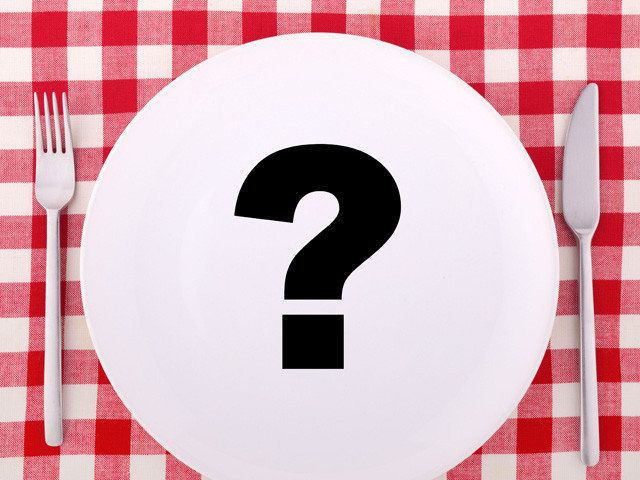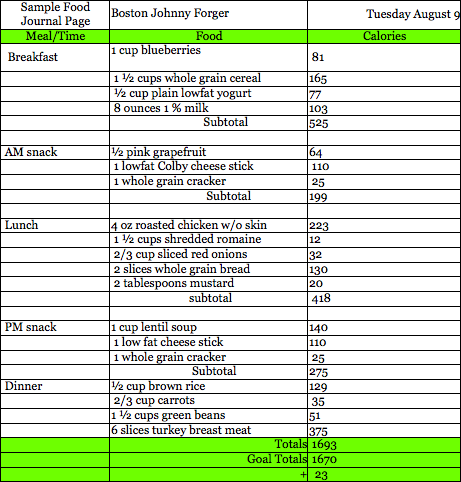
There are no two ways about it: The contestants on "The Biggest Loser" know -- or rather, come to find out -- that their weight-loss journey and the path to health is not a result of a "diet" or fad, but a medically sound lifestyle modification program that includes exercise and a sensible, healthy eating plan. Diets are temporary. This is not.
There is no "magic bullet" you can take to help you reach your weight and fitness goals. You must eat less and move more. But eating smarter is key. It is hard work, but it's well worth it on many levels. And it's the only healthy path. For 12 seasons, I've instructed every Biggest Loser contestant on the same eating plan -- it works!
The plan has helped hundreds of contestants (and viewers as well) reach their weight loss goals. But it's not only a great way to eat for weight loss, it's an excellent eating plan for ANYONE and EVERYONE in the family. It promotes a strong immune system, healthy blood sugar levels (and increased energy!) along with regularity and cardiac health. The bare basics of the eating plan are this: strive to get 45 percent of your calories from smart carbohydrates (whole grains, legumes, vegetables and fruits), 30 percent of your calories from lean proteins and 25 percent of your calories from good fat (especially unsaturated fat like olive oil).
Did you know that one out of every four Biggest Loser contestants has diabetes when they arrive on the Ranch? They ALL leave without it! You may also have heard on this season's premiere episode when Joe Mitchell reported that he'd been taking blood pressure medication for two-and-half years and was able to stop taking his meds after only three days at the Ranch! It has everything to do with the BL eating and fitness plan.
The key is to divide and conquer ... on this plan, you try to have three meals and two to three snacks each day. And an important factor is to pair protein with each meal and snack. This helps level out blood sugar and helps you stay full longer.
So, how do you do this? Here is an example of how to structure your meals according to the BL eating plan:
Day One of a (sample) 1,500 calorie menu
Breakfast
1/2 cup (3 ) egg whites scrambled with 1 teaspoon olive oil, 1 teaspoon chopped basil, 1 teaspoon grated Parmesan and ½ cup cherry tomatoes
1 slice Ezekiel or whole grain toast
1 cup non fat milk
1/2 cup fresh blueberries
1 cup decaf iced tea with lemon
Mid-morning snack
1/2 cup nonfat vanilla Greek style yogurt (or frozen yogurt) sprinkled with 2 tablespoons sliced strawberries
Lunch
Southwestern Bulgur Salad with 3/4 cup cooked bulgur, 4 ounces chopped grilled chicken breast, 1 cup diced grilled veggies (2 tablespoons onion, ¼ cup diced zucchini, ½ cup Bell pepper)
1 teaspoon chopped cilantro with 1 serving (1 tablespoon) light Caesar vinaigrette and 1 tablespoon shredded low fat cheddar cheese
Ice water with lime
Mid-afternoon snack
2 tablespoons hummus and 1/2 cup jicama slices
Dinner
1 cup wild rice with toasted almonds
4 ounces grilled salmon filet
1 cup wilted baby spinach w/ 1 teaspoon olive oil + 1 teaspoon balsamic vinegar and 1 teaspoon grated Parmesan cheese
1/2 cup diced cantaloupe
Decaf coffee or green tea
Evening Snack
1/2 cup raspberry sorbet with 1 teaspoon chopped pecans
This is a sample based on a 1,500 calorie goal. I've written about guidelines on how to roughly calculate your own calorie goals here.
I can't emphasize enough the importance of keeping a detailed food journal, recording everything you eat over the course of a day. When done vigilantly the journal becomes invaluable in spotting trouble areas, and eventually becomes a grocery list and menu-planning tool. You can find a video where I explain food journaling in more detail (and get a peek at what goes on behind-the-scenes of The Biggest Loser) here.
Food journaling is one of the biggest weight loss secrets. We all eat more than we think we do, and keeping a running tally of every sip and nibble really heightens our awareness of how often we do this. But the first step in food journaling is to figure out -- how big is a serving size?
Weighing and measuring food is really important when you're trying to divide your daily calories between three meals and two snacks.
For this, you will need:
• A liquid measuring cup (2 cup capacity)
• A set of dry measuring cups (includes 1 cup, 1/2 cup, 1/3 cup and ¼ cup sizes)
• Measuring spoons (1 tablespoon, 1 teaspoon, 1/2 teaspoon, and 1/4 teaspoon)
• Food scale
• Calculator
Be sure that the food scale measures grams. (A gram is very small, about 1/28th of an ounce.) Most of your weight measurements will be in ounces, but certain foods, such as nuts, are very concentrated in calories, so a portion size will be much smaller. Food scales range in price from a few dollars to $30 dollars or more. Some of them are digital and a little more expensive. Fancy versions may even have an internal database of foods to calculate the number of calories in the food you're weighing. In the long run, you'll be much better off familiarizing yourself with what different amounts look like and relying on a simple conversion guide, as any scale isn't nearly as portable and you probably won't have an extra scale at work or in your car.
Getting Started
If you like having your cereal in your favorite bowl each morning, measure 1/2 cup (or your designated serving size) into the bowl tomorrow morning. Then measure the milk in the liquid measuring cup and pour it on your cereal. Take a mental note of how this looks and you won't have to measure each time. No more quart-size bowls of cereal or panfuls of buttered popcorn. Your food portions are now smaller, and soon, your clothes will be too.
For consistency, your food should be weighed and/or measured after cooking. Four ounces of boneless skinless chicken breast has around 140 calories when raw. When it's cooked, it'll weigh closer to 3 ounces. That is because it loses water during the cooking process and the calories are now more concentrated. The same holds true for vegetables and other cooked foods. Dry cereals or grains on the other hand may start off with a couple tablespoons per serving. Add water and cook and the volume or measured amount may double or triple.
After measuring all of your foods for a week or so, you'll be able to make fairly accurate estimates by eye without having to measure everything, each time you eat. Of course you'll always need to weigh and measure when trying a new food for the first time, so keep you measuring tools in a handy location. Over time, you'll know what's just right for you, whether you're plating a meal in your own kitchen, or deciding how much of your entrée to eat in a restaurant (and how much of it to wrap up and take home!) But in the beginning, you'll need a few tools until you get it just right.
If you're not accustomed to spending time in the kitchen, here is a conversion table that may be helpful to you.
Remember that an ounce of DRY weight is not the same as a fluid ounce. You cannot convert the two without knowing the density of the ingredient you are measuring.
It is imperative to keep track of the number of calories you take in (and burn off through exercise) each day, especially when you're just getting started. Buy a notebook and a pen just for this purpose. Keep it in your desk, your handbag, your backpack or wherever is handy or most convenient for you. Take notes throughout the day, because it's easy to forget an unplanned snack or tasting. Find a routine, a favorite place and a time to record your journal. This is one of the biggest keys to your success. If your prefer, you can record this on your computer, too -- whatever is easiest and most convenient for you.
If you want to keep track of how many of your calories come from carbohydrate, protein or fat, remember that a gram of protein or carbohydrate has 4 calories. One gram of fat has 9 calories.
When we inform the contestants on The Biggest Loser of their calorie budgets at the beginning of each season, we tell them to let us know if they're tired or hungry, in which case, we will raise their calorie level (until they're not tired or hungry!). Below is a sample journal from BL12's Boston Johnny Forger. His daily calorie goal of 1,670 is lower than most of our men, largely due to Johnny's age (65), activity level (low), muscle mass and lower metabolic rate.

Keep reading this season and I'll give you MORE menus, MORE recipes, MORE weight loss secrets and all the things you need to be a "Biggest Loser" at home!
Cheryl Forberg RD is a James Beard award-winning chef, Nutritionist for NBC's "The Biggest Loser" and New York Times bestselling author. Her latest book is "Flavor First" (Rodale). She lives on a farm in Napa, California. For more nutrition and cooking tips, visit Cheryl's website.